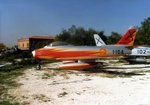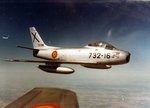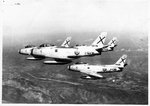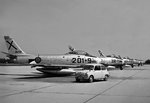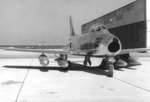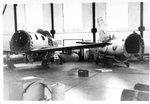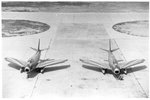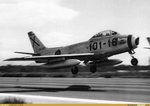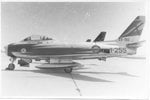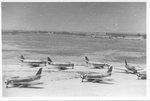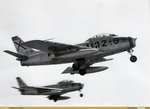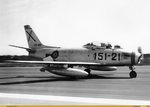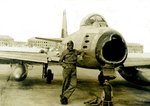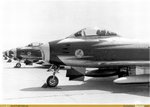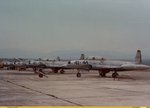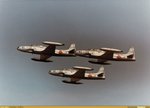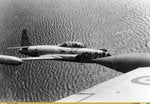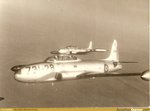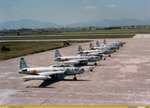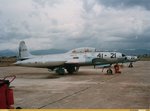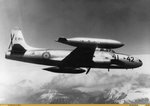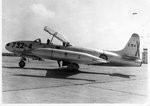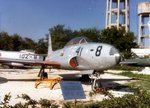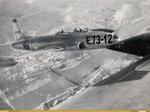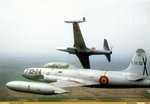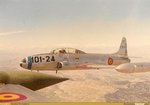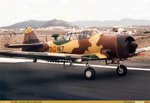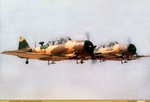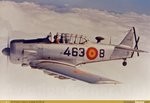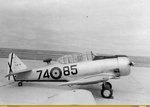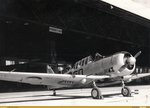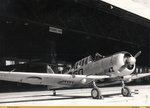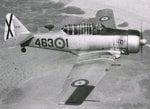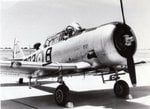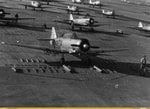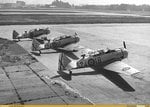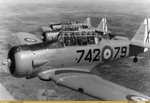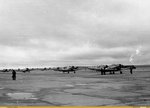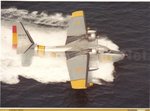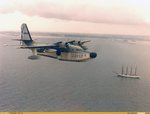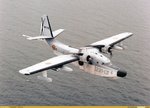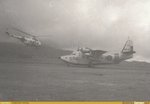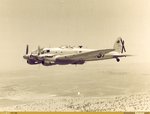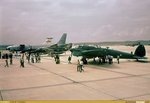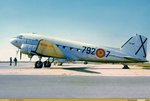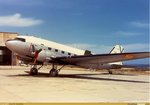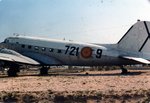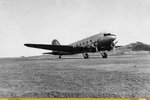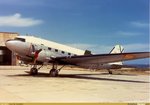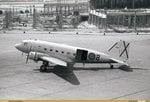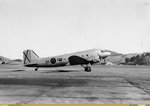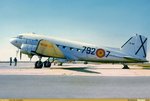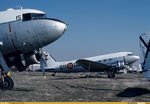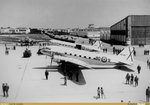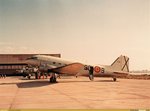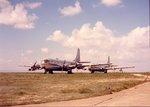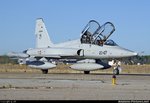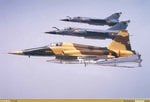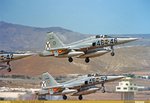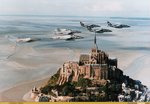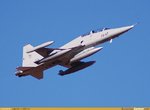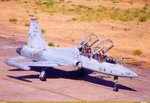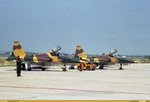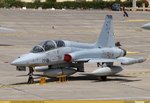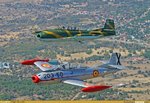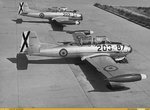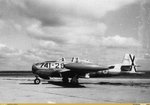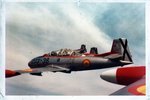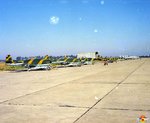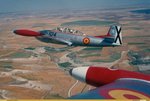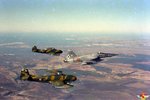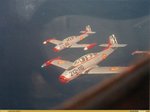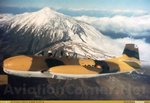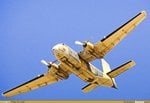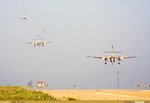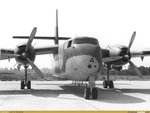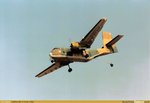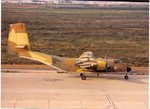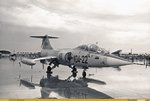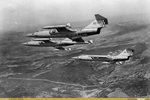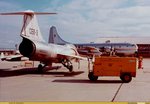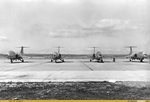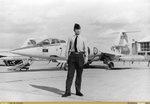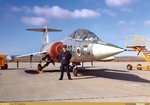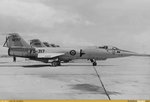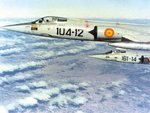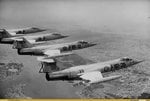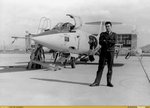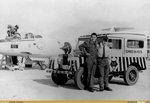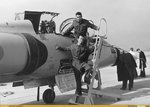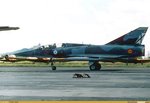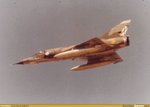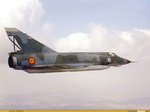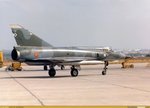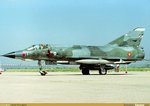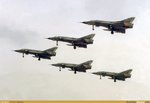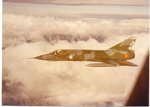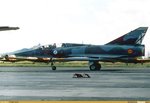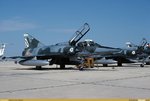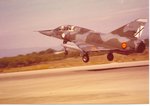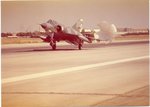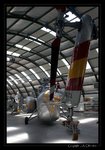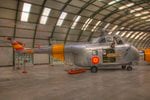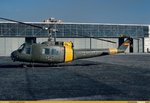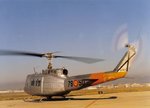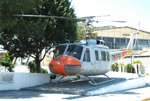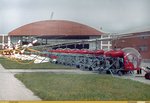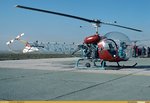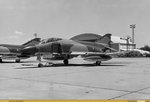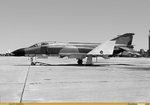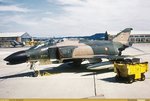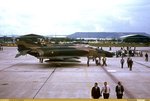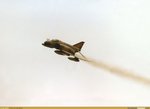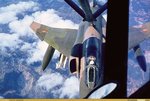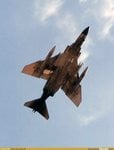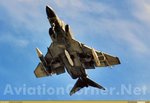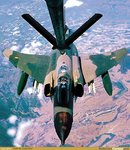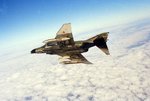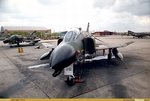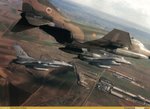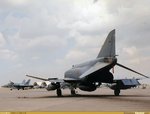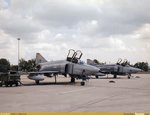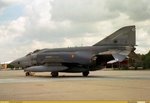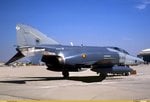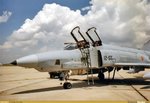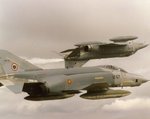The Spanish Air Force (Spanish: Ejército del Aire; literally, "Army of the Air") is the air force of Spain. It is one of the 3 branches of the Spanish Armed Forces and has the mission of defending the sovereignty and independence of Spain, its territorial integrity and constitutional freedoms, within airspace of Spain and its territories as well as to maintain the international security in operations of peace and humanitarian help. The present Spanish Air Force was not formed until October 7, 1939, at the end of the Spanish Civil War. The EdA was a successor to the Nationalist and Republican Air Forces. During World War II, one air section, the "Blue Squadron" (Escuadrilla Azul), operated alongside the Blue Division (Division Azul). The Blue Division was a Spanish volunteer group which fought alongside the Axis Powers on the Eastern Front. During the first years after WWII the Spanish Air Force consisted largely of German and Italian planes and copies of them. An interesting example was the HA-1112-M1L Buchon (transliteration: "big throat"), this was essentially a licensed production of the Messerschmitt Bf 109 re-engined with a Rolls-Royce Merlin for use in Spain. Although in sheer numbers the EdA was impressive, at the end of WWII technically it had become more or less obsolete due to the progress in aviation technology during the war. For budget reasons Spain actually kept many of the old german aircraft operative well into the 50´s and 60´s, as an example the last Junkers Ju-52 transport plane was not retired from service until 1972.
On March 18, 1946, the first Spanish paratroop unit was created. It participated in the Ifni War during 1957 and 1958. In this campaign many old axis aircraft still saw service such as the Junkers 52 or the Heinkel 111 (nicknamed "Pedro") and others. Links were established in the 1950s with the United States. Spain received its first jets, like the F-86 Sabre and Lockheed T-33 together with training and transport planes like the T-6 Texan, DC-3 and DC-4. This first age of jets was replaced in the 1960s by newer fighters like the F-104 Starfighter, F-4C Phantom and F-5 Freedom Fighter. The organization and equipment of the Spanish Air Force was again modernised in the 1970s to prepare for Spain's membership of NATO in 1982. Planes like the Mirage III and Mirage F1 were bought from France and became the backbone of the Air Force during the 1970s and part of the 1980s until the arrival of the American F/A-18 which participated in the Bosnian War and the Kosovo War under NATO command, based in Aviano, Italy. The Spanish Air Force is replacing older aircraft in the inventory with newer ones including the recently introduced Eurofighter Typhoon and the Airbus A400M airlifter, both manufactured with Spanish participation. Its aerobatic display team is the Patrulla Aguila, which flies the CASA C-101 Aviojet. Its helicopter display team, Patrulla Aspa, flies the Eurocopter EC-120 Colibrí.
On March 18, 1946, the first Spanish paratroop unit was created. It participated in the Ifni War during 1957 and 1958. In this campaign many old axis aircraft still saw service such as the Junkers 52 or the Heinkel 111 (nicknamed "Pedro") and others. Links were established in the 1950s with the United States. Spain received its first jets, like the F-86 Sabre and Lockheed T-33 together with training and transport planes like the T-6 Texan, DC-3 and DC-4. This first age of jets was replaced in the 1960s by newer fighters like the F-104 Starfighter, F-4C Phantom and F-5 Freedom Fighter. The organization and equipment of the Spanish Air Force was again modernised in the 1970s to prepare for Spain's membership of NATO in 1982. Planes like the Mirage III and Mirage F1 were bought from France and became the backbone of the Air Force during the 1970s and part of the 1980s until the arrival of the American F/A-18 which participated in the Bosnian War and the Kosovo War under NATO command, based in Aviano, Italy. The Spanish Air Force is replacing older aircraft in the inventory with newer ones including the recently introduced Eurofighter Typhoon and the Airbus A400M airlifter, both manufactured with Spanish participation. Its aerobatic display team is the Patrulla Aguila, which flies the CASA C-101 Aviojet. Its helicopter display team, Patrulla Aspa, flies the Eurocopter EC-120 Colibrí.
Attachments
Last edited:

